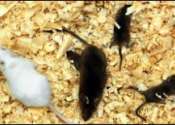Supersense: It's a snap for crocs
Previously misunderstood multi-sensory organs in the skin of crocodylians are sensitive to touch, heat, cold, and the chemicals in their environment, finds research in BioMed Central's open access journal EvoDevo. These sensors ...







